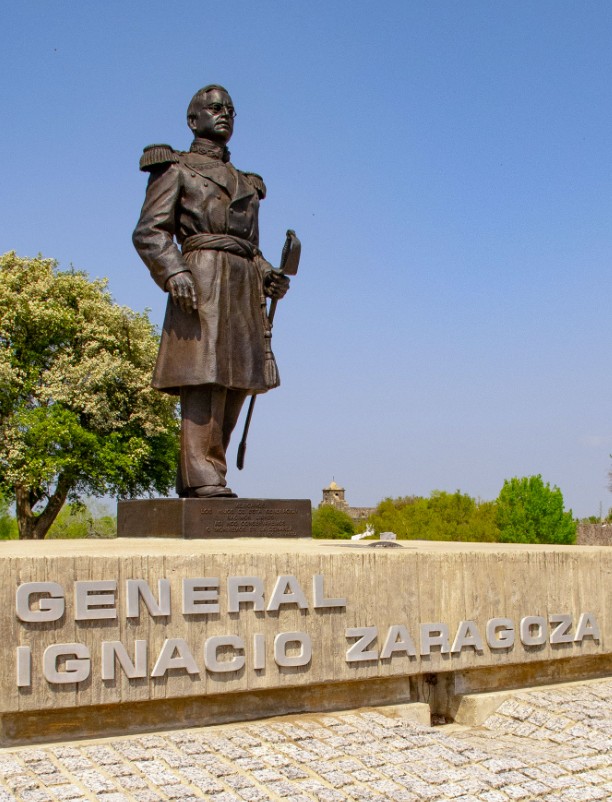 Past Matters, Summer 2025, Published 6/23/2025
Past Matters, Summer 2025, Published 6/23/2025
Ignacio Seguín Zaragoza was born in the shadow of La Bahía del Espíritu Santo near Goliad—a quiet village of stone houses and simple jacales. The year was 1829, and the town had only held that name for a few weeks when he made his appearance. It would be several years before it became infamous for the Goliad Campaign and subsequent execution of James W. Fannin’s command.
Today, a replica of one of the stone houses stands as the Zaragoza Birthplace State Historic Site, a new addition to the Texas Historical Commission’s portfolio. The reproduction was completed in 1974, following archeological excavations in 1969 and 1972, and was based on plans drawn by prolific Texas architect Raiford Stripling. The small, white building evokes elements of Spanish colonialism with its plastered walls and timbered ceilings. Inside, a variety of colorful displays highlight the history of the site, life on the early 19th-century Mexican frontier, and the thing for which Ignacio Zaragoza is most famous—Cinco de Mayo.
The Zaragoza family doesn’t immediately spring to mind when you think of Texas history. While Zaragoza’s mother was a member of the politically and socially prominent San Antonio area Seguin family, his father was a Mexican infantryman that hailed from Veracruz. Following Santa Ana’s surrender at San Jacinto in 1836, the Zaragozas left Goliad and eventually settled in Monterrey, Mexico. There Zaragoza followed his father into military service.
Zaragoza served with distinction in a time of great political upheaval, known as the War of Reform, when progressive liberals in Mexico pushed for democracy and a constitutional government. As a member of the Liberal government, he took part in multiple military engagements and was appointed to the Mexican parliamentary ministry as the minister of war and navy under President Benito Juarez.
When Juarez declared a moratorium on European debt, military forces from Spain, France, and England—nations which backed the Conservatives—forced the surrender of the coastal city of Veracruz and begin moving inland. During a day-long pitched battle at the city of Puebla, Zaragoza’s troops repelled the French, resulting in a great victory for Juarez’ government.
Cinco de Mayo—the day that commemorates that victory on May 5, 1862—is recognized in Mexico, but large celebrations are primarily limited to the city and state of Puebla where the battle occurred. Somewhat confusingly, the day is celebrating more widely and energetically in the United States. When news of the battle reached the United States and its territories, Mexican American communities began celebrating the victory with festivals that symbolized Mexican resilience. A century later, the Chicano Movement brought a reaffirmation of that cultural pride and resurgence of such celebrations.
In 1980 the city of Puebla gifted a statue of the military hero, General Ignacio Seguín Zaragoza, to the historic site. It stands with the home illustrating the connection that exists between the two countries and cultures well beyond the period it memorializes.
Traci Anderson, Friends of the Texas Historical Commission